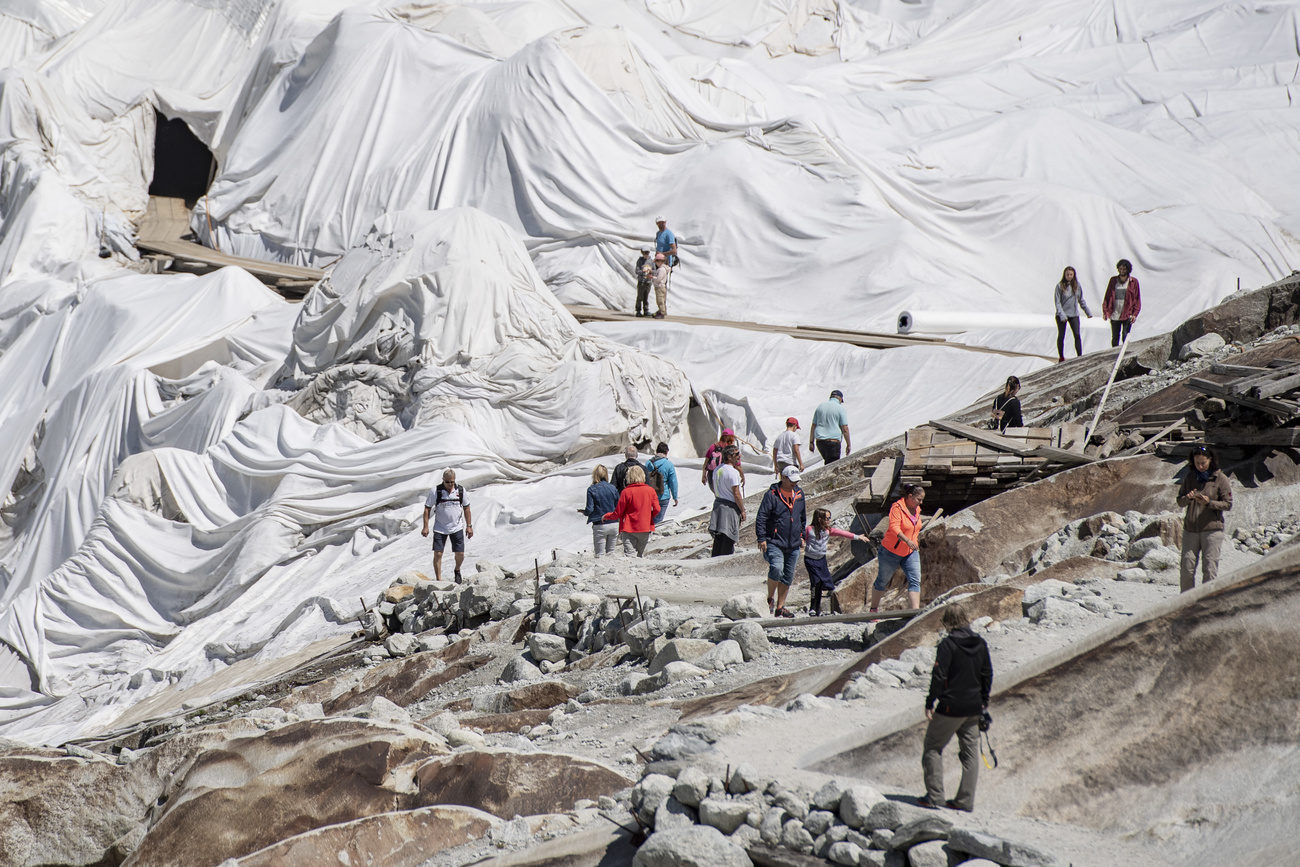
Glacier tarpaulins an effective but expensive shield against heat

Protecting Swiss glaciers with white tarpaulins reduces ice and snow melt by around 60%, a new study shows. But this method cannot be applied on a large scale for reasons of cost.
Just 0.02% of the country’s total glacier area is currently covered in geotextiles, a technique first introduced in the Swiss Alps in 2004 to address fast-melting glaciers under rising temperatures. Since then up to 350,000m3 of glacier ice has been temporarily preserved each year thanks to these tarpaulins, said researchers from the Swiss Federal Institute for Forest, Snow and Landscape Research (WSL).
Their study, conducted together with the federal technology institute ETH Zurich and the University of Fribourg, revealed that, over the past decade, the average cost of one cubic metre of artificially preserved glacier ice ranged between CHF0.60 and CHF7.90 ($8.40) per year. This, the researchers said, makes tarpaulins an unaffordable solution for shrinking glaciers.
They calculated it would cost CHF1 billion a year to cover all Swiss glaciers – a measure that would merely slow down but not stop the melting of glaciers in the long term.
Glaciers play an important role in winter tourism – their retreat can jeopardise the viability of entire ski resorts. Tarpaulins help to keep the ice thick by preserving snow that has fallen in winter under a fleece over the warmer months.
In addition to their prohibitive cost, the geotextiles can also have a major impact on the landscape and environment, said the researchers.
“The only way to effectively limit the global retreat of glaciers is to reduce greenhouse gas emissions and thus the warming of the atmosphere,” said lead author Matthias Huss, whose paper is published in the journal Cold Regions Science and Technology.

In compliance with the JTI standards
More: SWI swissinfo.ch certified by the Journalism Trust Initiative


















![The four-metre-long painting "Sonntag der Bergbauern" [Sunday of the Mountain Farmers, 1923-24/26] had to be removed by a crane from the German Chancellery in Berlin for the exhibition in Bern.](https://www.swissinfo.ch/content/wp-content/uploads/sites/13/2025/12/01_Pressebild_KirchnerxKirchner.jpg?ver=1ea8acae)










You can find an overview of ongoing debates with our journalists here . Please join us!
If you want to start a conversation about a topic raised in this article or want to report factual errors, email us at english@swissinfo.ch.